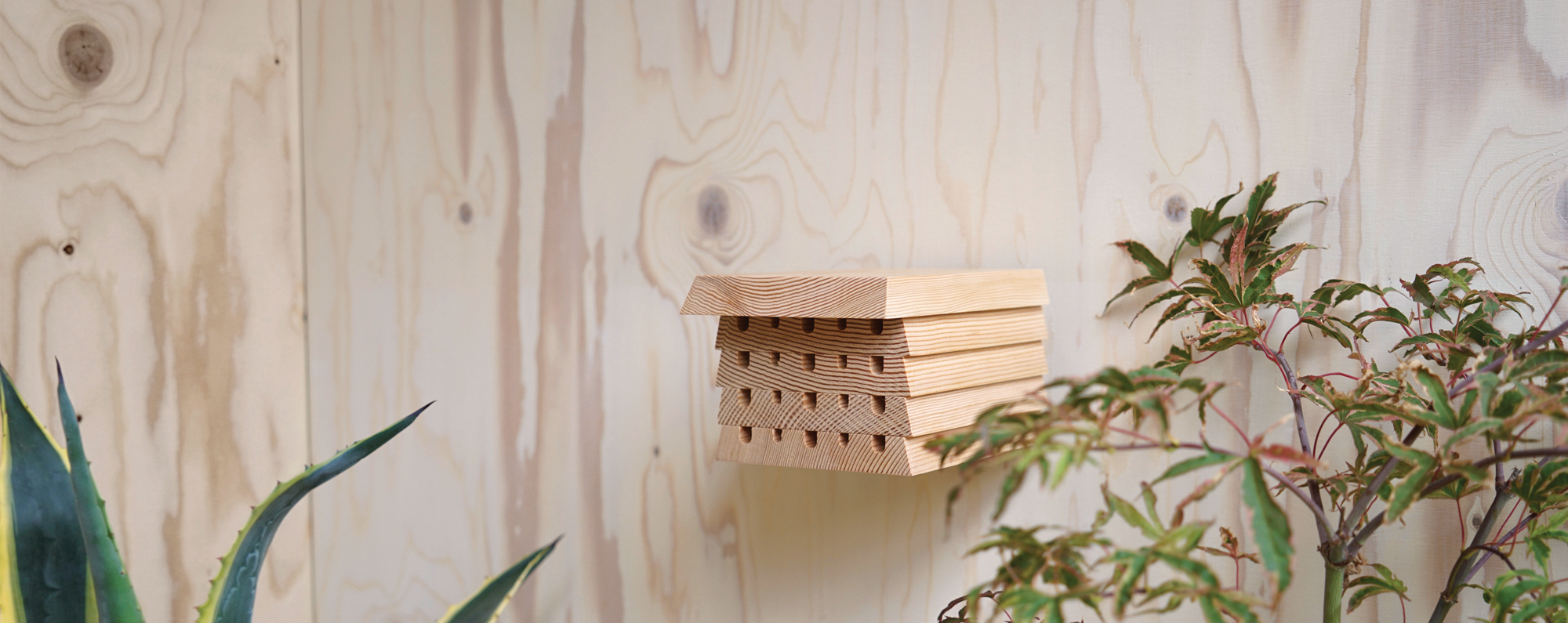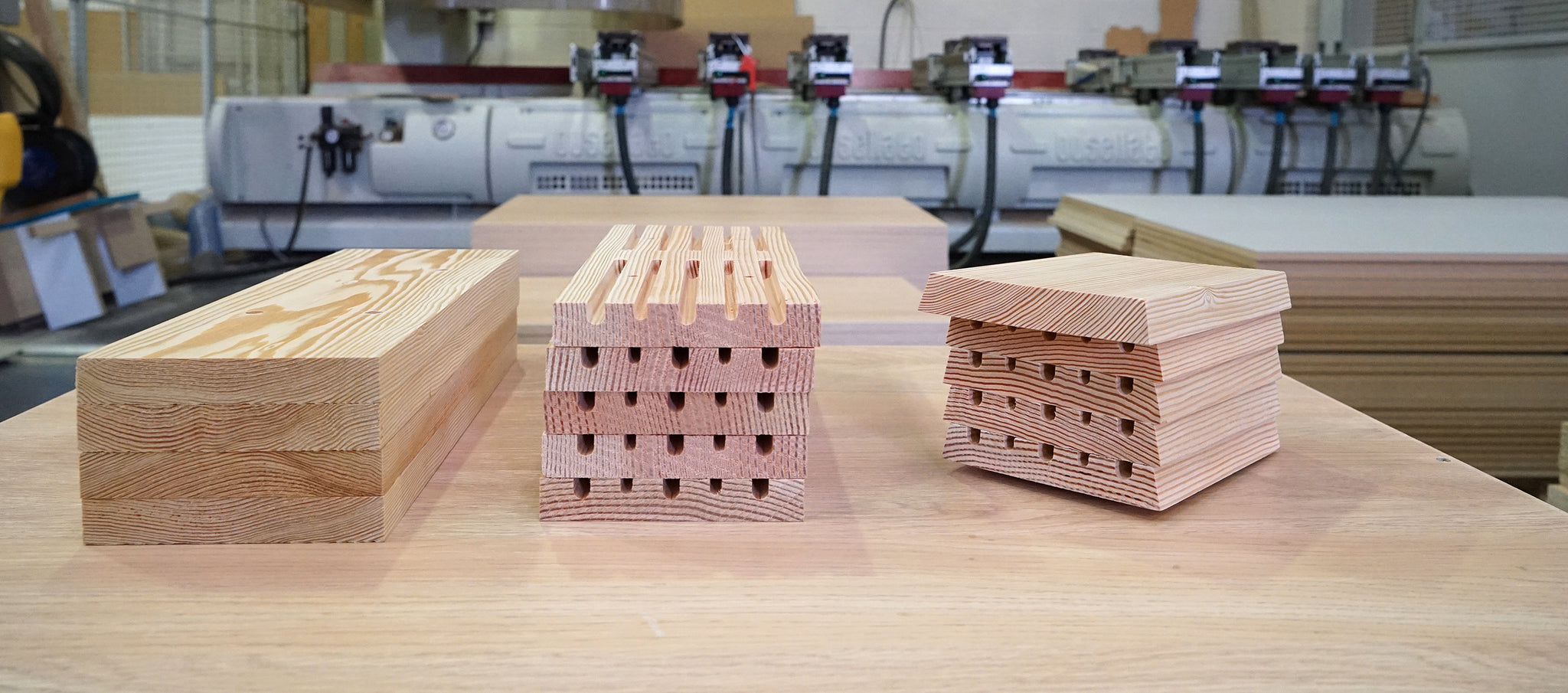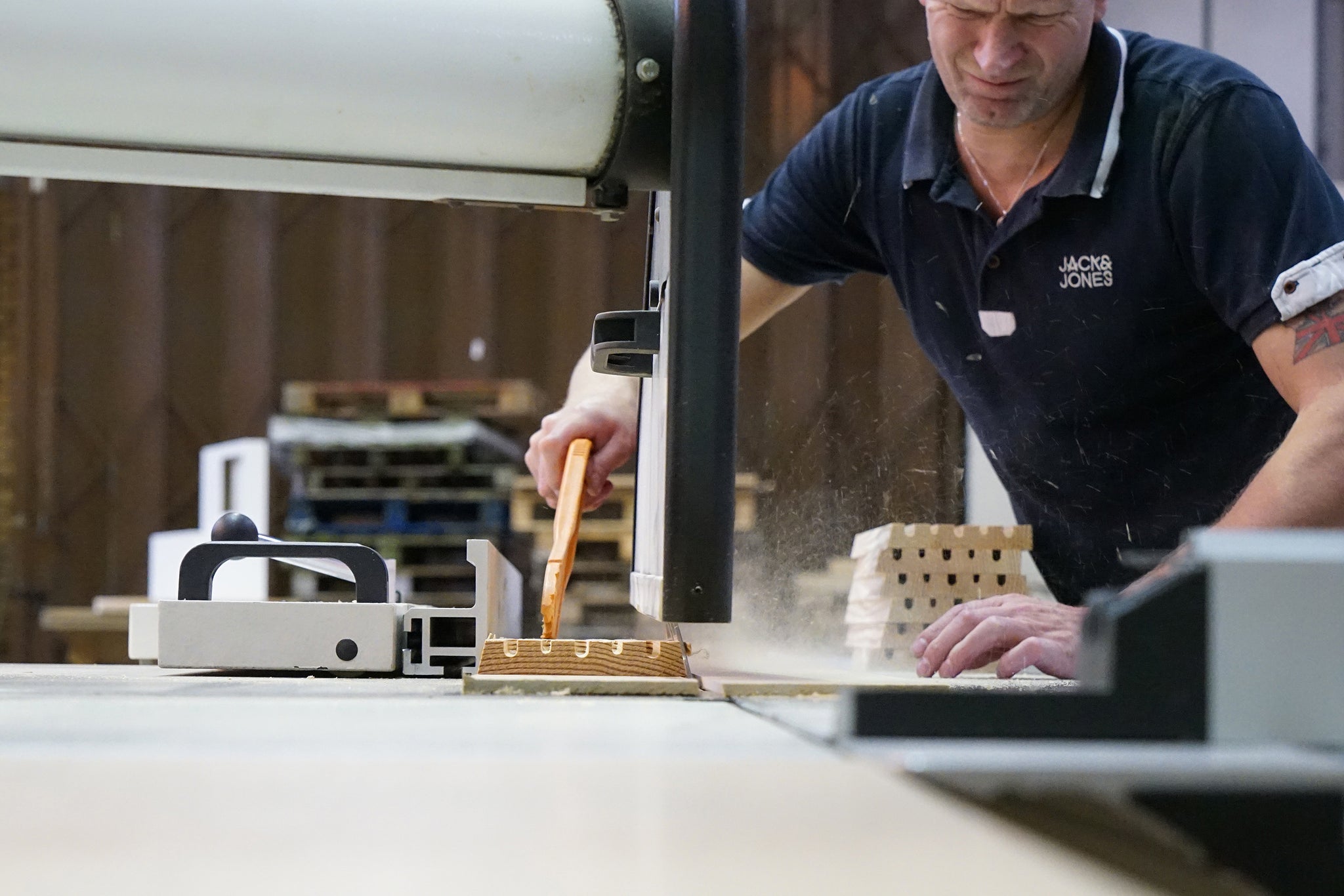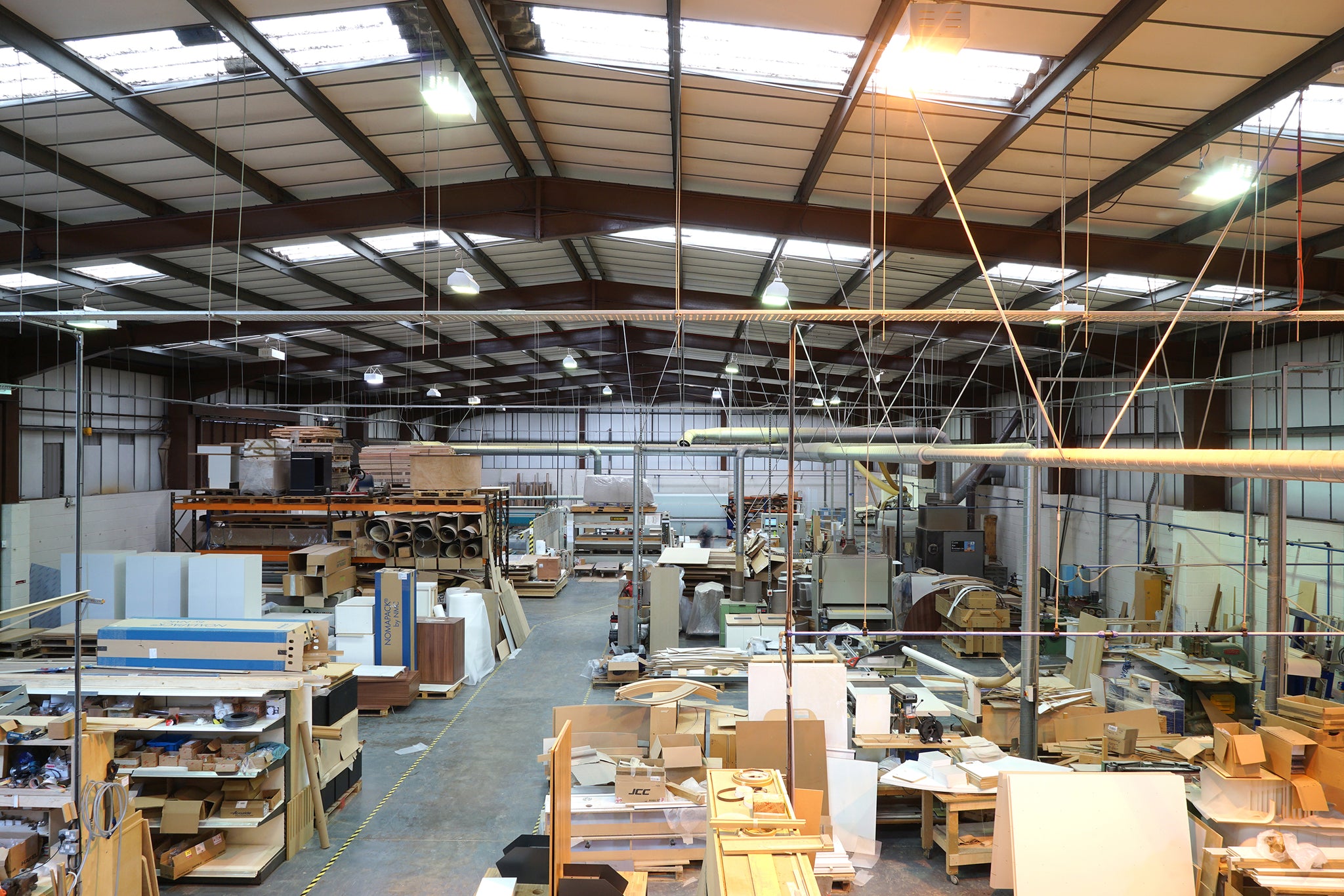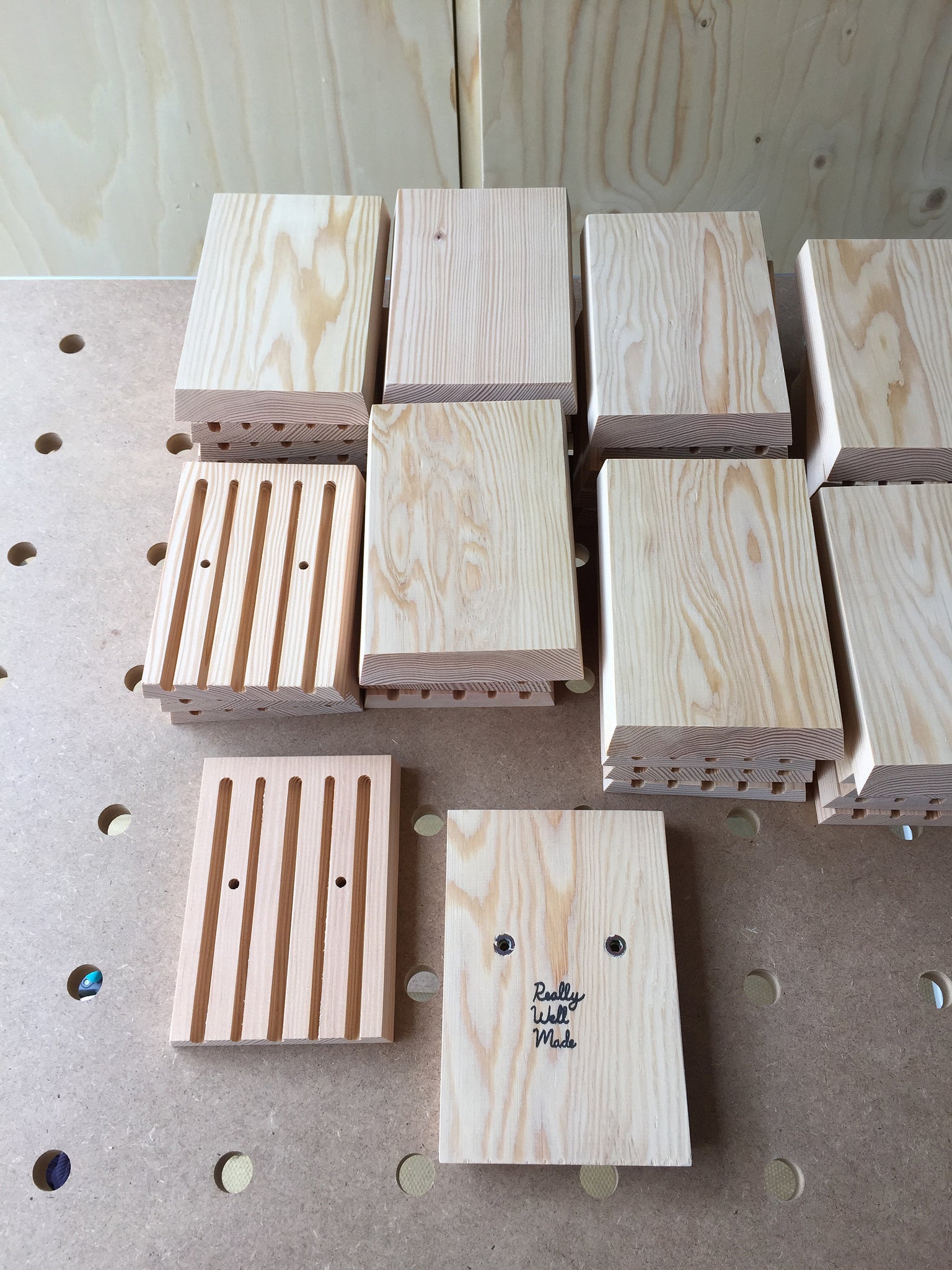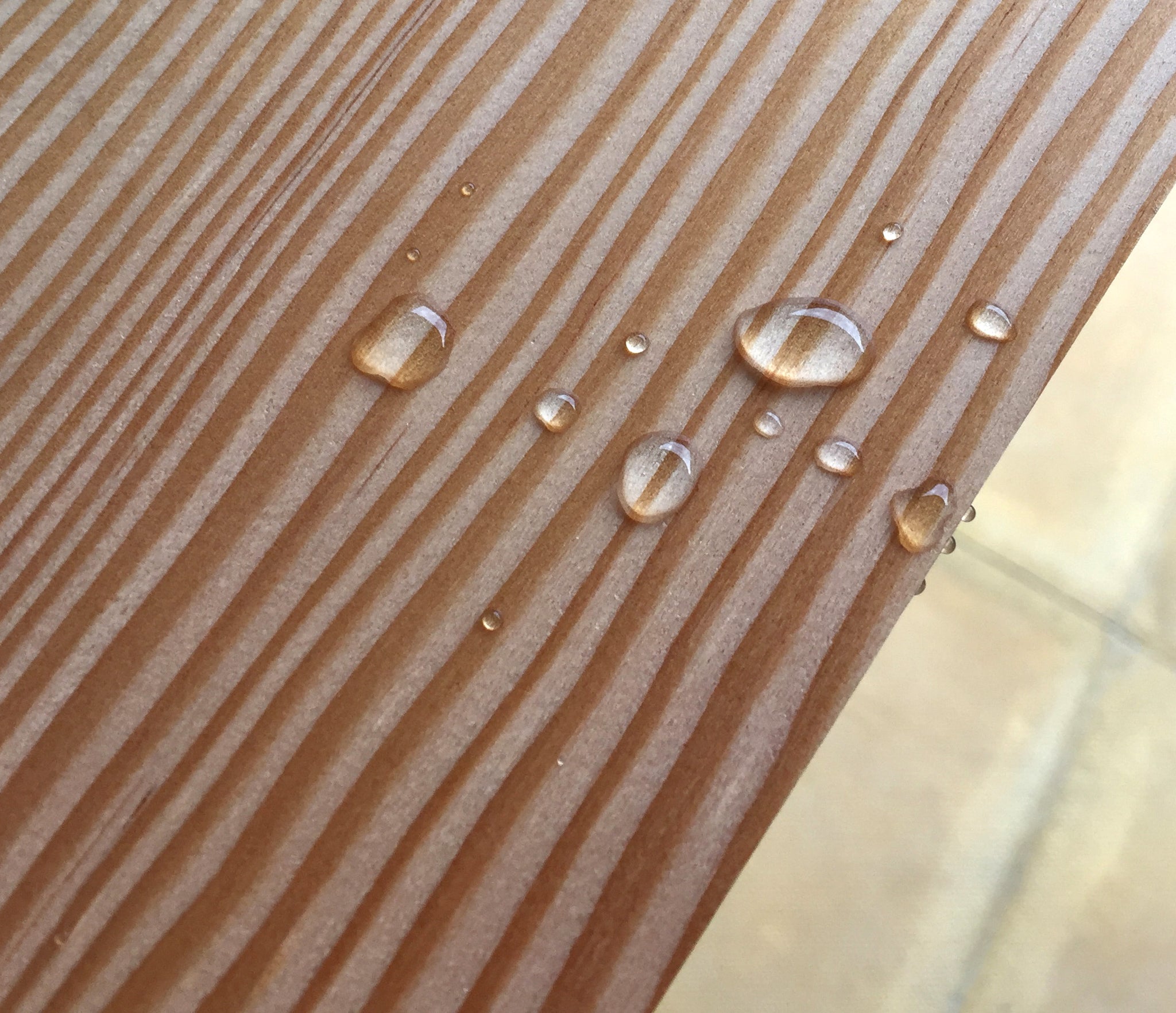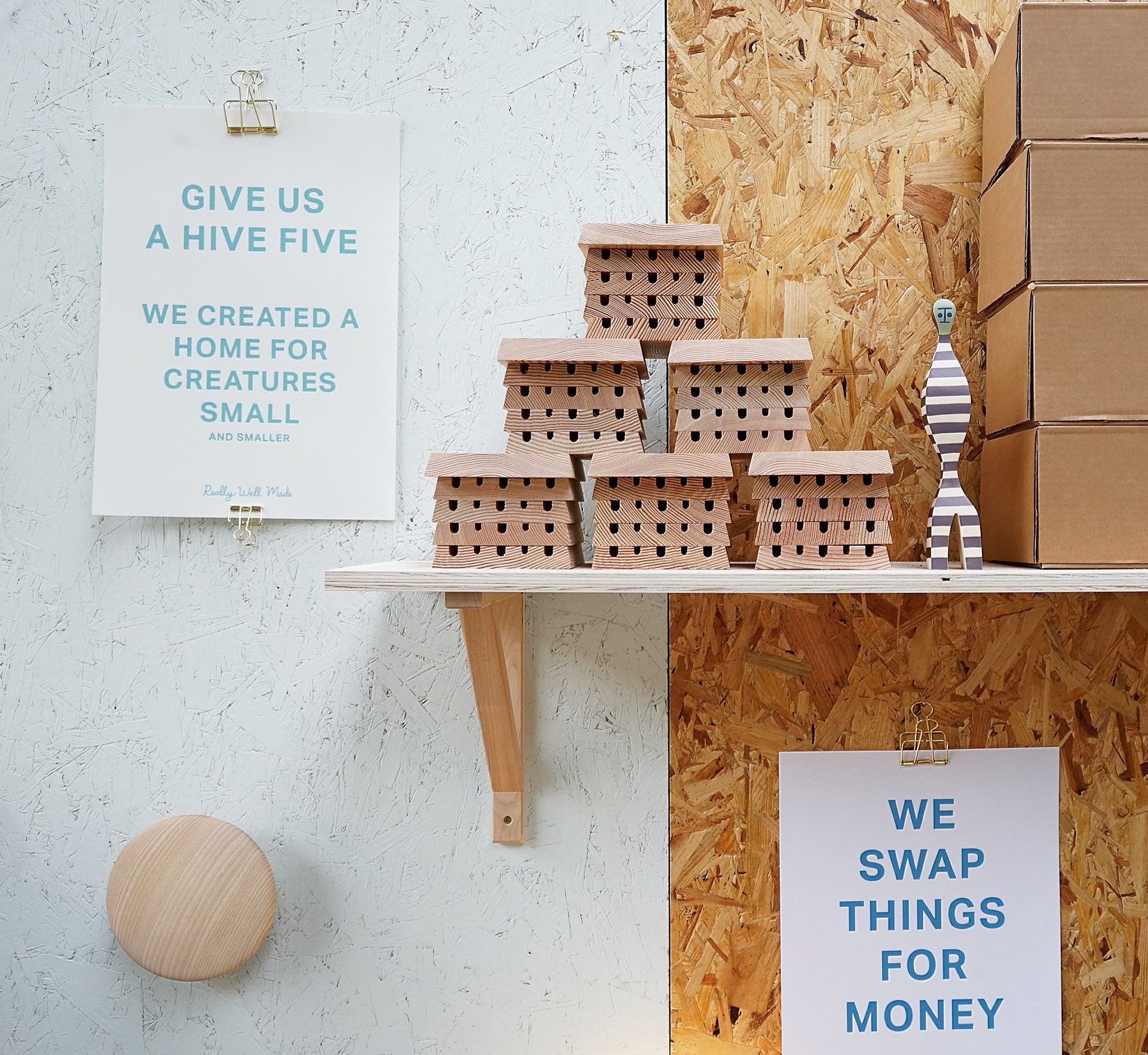Bee Machine
Over the last 6 months Really Well Made have been busy little bees, working on our own-brand range of products. One of the first will be a new abode for solitary bees dubbed 'Hive Five'. In this blog post we will share with you the product's journey so far.
As a company Really Well Made has a strong opinion on sustainability and environmental values (we will soon be publishing a section on the website that explains what we do in this area) so it seemed perfect for us to create a product to benefit our unique British ecosystem. Without a doubt the biggest threat to our planet is excessive consumerism. It may seem ironic for a retailer to point this out but it is not purchasing that is the problem; it is purchasing, discarding and purchasing again that causes us to waste both energy and natural resources. We believe that producing sustainably manufactured, high quality products, which stand both the test of time and fashion is the best way to ensure new production makes as little impact as possible.
The decline of honey bees in the UK has been well publicised, but with no end in sight of the harmful pesticides almost certainly causing their demise, a sort of bee conservationist movement has arisen. The general approach is to boost solitary bee numbers to make up for the shortfall in honey bees. Solitary bees live by themselves (as their name suggests), in holes/compartments and are generally stingless docile little creatures. They are also a great friend to gardeners, these active pollinators make a noticeable difference to the health and vitality of fruit and flowers near to their home. By placing a desirable bee home in your garden you are making it the first stop for all their hard work.
The RWM team were searching for a good quality bee house to expand our outdoor products collection, but all we found was a market full of throwaway products. The products were not marketed as throwaway of course, but from reading the reviews of customers who had owned these items for a year or so, it became clear that the materials used to create them were not up to scratch. Most it seems, simply fall apart after enduring the British weather for a year or two. So instead we thought we would make our own, choosing the right materials and giving the design a twist we know our Modernism loving customers and bees would appreciate.
As it turns out solitary bees are quite particular about the type of home they will pick for themselves. Here was the client's brief:
- Make the compartment 150 mm deep - there are some birds out there with pretty long beaks and we don't want to get gobbled up.
- There are nearly 250 different types of us solitary bees living in the UK and we're all different shapes and sizes, please have a few different compartment size options.
- We're not keen on the rain, in fact we won't leave the house if it's wet outside. Some sort of shelter to protect the compartment entrance would be much appreciated.
With all these considerations duly noted we chose the material to use for the house itself. We already knew bees like wood - it's one of the materials that they would try and find a gap in, or create a hole into naturally. The best all-around option we think is Douglas Fir - one of the very strongest softwoods. It has a high density that prevents warping in changing weather that low-cost softwoods are prone to and it has a good moisture content to prevent splitting and cracking that hardwoods often display. We also thought of another way to keep the wood in good condition; wood will only warp if it is allowed to, by using a bracket at the base and threaded inserts in the roof we devised a way of clamping pieces of timber tight together that in effect prevents them from moving at all.
Longevity of the design was essential and appropriate material choices would be a key factor in achieving it, but there were also design aspects and material treatments that could have a positive impact as well: The wall bracket is constructed from folded steel and finished with a zinc passivated treatment to allow use outside in all conditions, without any corrosion or rusting. The sides of the house are angled, this lapped detail allows water to run off and drop away, instead of slipping into the gaps. Although wood treatments would keep the wood protected from the elements, it would also discourage bees who are quite sensitive to any chemicals. One treatment of course does go down well...Beeswax. We treat each part of our bee house with the wax, to give it over a years worth of protection. Further treatments can easily be applied on top at any time it's needed.
With the design basics established on paper, it was time to put the theory into practice. We travelled up to the Midlands to produce a prototype with a joinery manufacturer we have a long-standing relationship with. Leicestershire is such a good location for UK based manufacturing, as so many excellent companies are in close proximity with each other. We source the Douglas Fir only a few miles away from our joiner, reducing the transportation's impact on the environment while we're at it. UK based manufacturing is important to us for this reason and everything we design and make is made in the UK. After all for a little more money we can make use of some of the best craftsmen in the world and benefit our own economy in doing so.
To make each house the timber is planed into a profile suitable for either a roof or nesting section - the roof is 5 mm wider, to protect the nesting sections below from the elements a little more than it would otherwise. Nesting sections are then routed into creating the compartments for the bees, there are two 6 mm channels and three 8 mm channels in each section, making the perfect home for most British bees. The next step is to create the lapping detail on the section edges, each piece is passed by hand through a circular saw that removes a section from the side of the timber, creating a slight angle. All that is left to do is to sand down each piece, finish with beeswax and put the 5 five pieces together to create each Hive Five bee house.
Our first batch of Hive Fives are available now - supplied with a wall mounting bracket and fixings. A website with hint and tips on how to care for your new fuzzy friends, is in the making.

